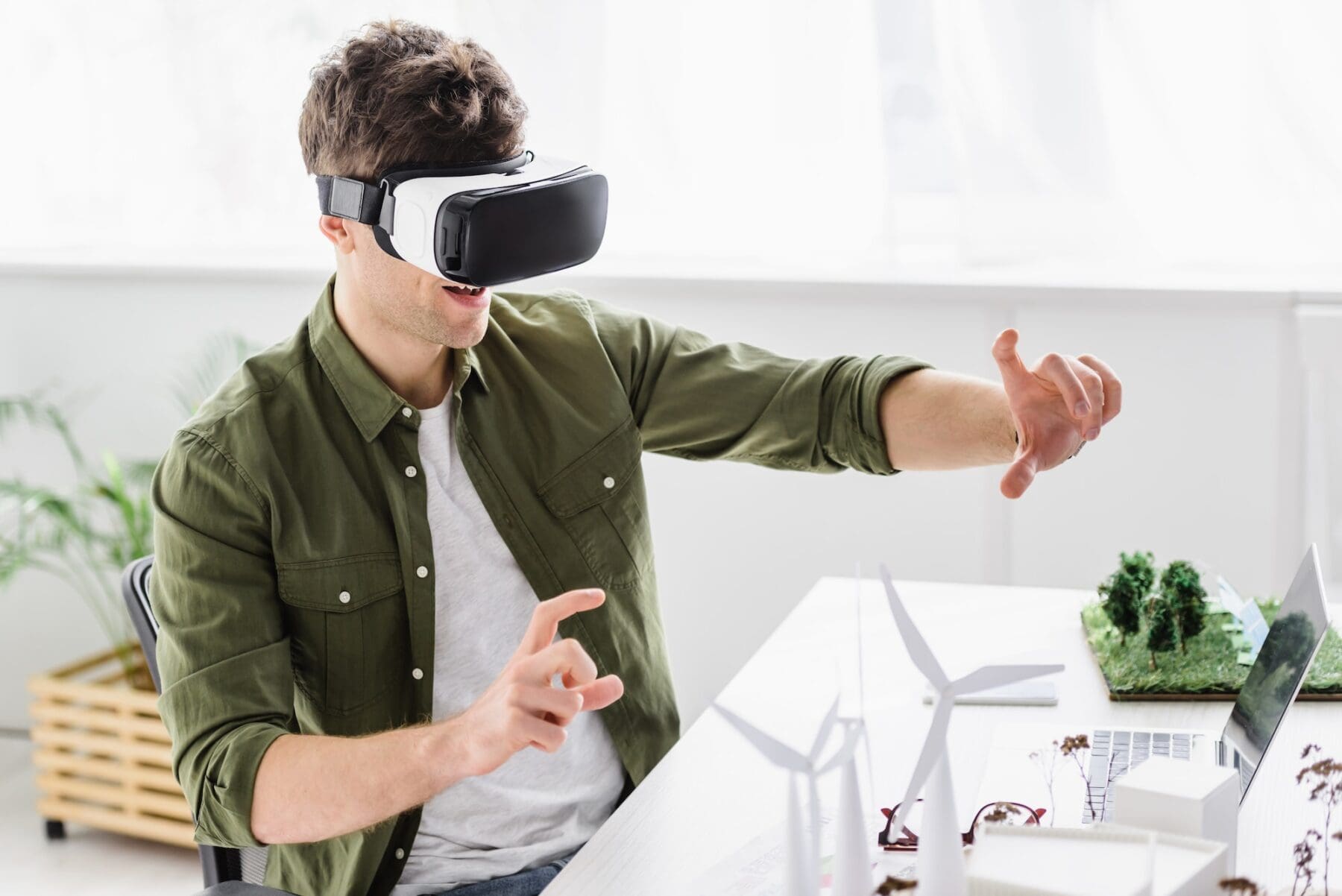Beyond the Screen: The Intersection of Virtual Reality and Web Design in 2023
Introduction
Virtual Reality (VR) has transcended its early status as a novel entertainment technology and is rapidly forging new paradigms across various industries. In the realm of web design, VR presents transformative opportunities and challenges that redefine user experience and interaction. In 2023, the synergy between VR and web design emerges as an innovative frontier that offers an immersive and interactive environment far beyond traditional screens. This article explores the current landscape, strategies, applications, and future prospects of integrating VR into web design.
Part 1: The Evolution of Virtual Reality in Web Design
A Brief History of Virtual Reality
- 1960s – The Beginnings: With the invention of the first VR headset by Ivan Sutherland, the journey began.
- 1990s – Gaming Industry Adoption: VR gained traction in the gaming industry.
- 2010s – Mainstream Acceptance: Major tech companies started investing, making VR more accessible to the public.
- 2020s – Integration into Web Design: The integration of VR into web experiences started to become more common, enhancing interactivity and immersion.
The Current Landscape
- Accessibility: With the proliferation of affordable VR headsets, VR has become more accessible to average consumers.
- Industry Adoption: Various industries, from retail to education, have begun to leverage VR for unique online experiences.
Part 2: Strategies for Integrating VR into Web Design
Design Considerations
- User-Centered Design: Creating VR experiences that are intuitive and user-friendly is crucial. Understanding user needs and preferences can guide design decisions.
- Accessibility Compliance: Ensuring that VR web experiences are accessible to all users, including those with disabilities, aligns with ethical principles and legal standards.
Technological Approaches
- WebVR: An open standard that makes it possible to experience VR in a web browser.
- 3D Modelling: Employing 3D models to create realistic and engaging VR environments.
Part 3: Applications of VR in Web Design
E-Commerce
- Virtual Showrooms: Retailers provide virtual showrooms, allowing customers to explore products in a 3D environment.
- Try-On Features: For example, virtual try-on glasses or clothing.
Education and Training
- Virtual Classrooms: Educational institutions use VR to create immersive learning environments.
- Skill Training: Medical, technical, and other skill-based training can be enhanced through VR simulations.
Tourism and Real Estate
- Virtual Tours: Hotels and real estate agencies offer virtual property tours, providing a tangible sense of space.
Part 4: Challenges and Solutions
Technical Challenges
- Performance Issues: Managing the computational demands of VR can be a challenge, requiring optimisation techniques.
- Compatibility: Ensuring that VR content is accessible across different devices and browsers.
User Experience
- Navigation Complexity: Designing intuitive navigation within VR environments without overwhelming users.
- Accessibility for All Users: Implementing VR solutions that cater to those with disabilities or without access to VR hardware.
Solutions
- Adaptive Design: Creating experiences that adapt based on user devices and preferences.
- Guided Experiences: Providing guidance and tutorials within the VR experience to help users navigate.
Part 5: Ethical and Legal Considerations
- Data Privacy: Ensuring that data collected through VR experiences is handled securely and complies with legal requirements.
- Content Responsibility: Ensuring that VR content is responsibly designed, avoiding potential issues such as motion sickness or discomfort.
Part 6: Future Trends and Predictions
Increasing Integration with Other Technologies
- AR (Augmented Reality) and Mixed Reality (MR): The convergence of VR with AR and MR for a more immersive experience.
- AI-Powered Personalisation: Using AI to tailor VR experiences to individual users.
New Business Models
- Subscription-Based Experiences: Offering ongoing VR content through subscription models.
- Collaborative Virtual Spaces: Creating shared virtual environments for collaboration and social interaction.
Societal Impact
- Democratizing Education: Providing affordable and accessible educational experiences through VR.
- Enhancing Remote Work: Utilising VR to create realistic and engaging remote working environments.
Conclusion
The integration of Virtual Reality into web design in 2023 represents a revolutionary shift that transcends traditional boundaries of interaction and engagement. Moving beyond the screen, VR offers a multidimensional space where users can immerse themselves in interactive, realistic, and personalised experiences.
From e-commerce to education, various industries are leveraging this technology to enhance user experience, forge emotional connections, and create unique value propositions. Yet, along with these opportunities, challenges such as technical limitations, user accessibility, and ethical considerations need careful navigation.
With ongoing advancements and a broadening scope of application, the intersection between VR and web design is poised to redefine the digital landscape, contributing to new business models, societal benefits, and a more connected and immersive digital world.
The future of VR in web design is not merely a technological trend but a manifestation of a more profound shift in how we perceive, interact with, and shape our digital environments. It marks a step towards a more intuitive, human-centric approach where the digital experience is an extension of our natural world.
By embracing VR’s potential and navigating its challenges, web designers, developers, and businesses can pioneer new pathways in digital innovation, forging experiences that resonate with users on a more profound and meaningful level.
Footnotes
- Sutherland, I. (1968). “A head-mounted three-dimensional display.” Fall Joint Computer Conference, part I, AFIPS Conference Proceedings, Vol. 33, pp. 757–764.
- Rheingold, H. (1991). “Virtual Reality: Exploring the Brave New Technologies.” Summit Books.
- Norman, D. (2013). “The Design of Everyday Things: Revised and Expanded Edition.” Basic Books.
- WebVR Community Group. (2017). “WebVR API Specification.” W3C.
- Pantano, E., & Servidio, R. (2012). “Modeling innovative points of sales through virtual and immersive technologies.” Journal of Retailing and Consumer Services, 19(3), pp. 279–286.
- Neuhofer, B., Buhalis, D., & Ladkin, A. (2019). “Technology that changes the guest experience.” In “The Routledge Handbook of Hotel Chain Management.” pp. 37–53.
- Bowman, D. A., & McMahan, R. P. (2007). “Virtual Reality: How Much Immersion Is Enough?” Computer, 40(7), pp. 36–43.
- Milgram, P., & Kishino, F. (1994). “A Taxonomy of Mixed Reality Visual Displays.” IEICE TRANSACTIONS on Information and Systems, 77(12), pp. 1321–1329.


